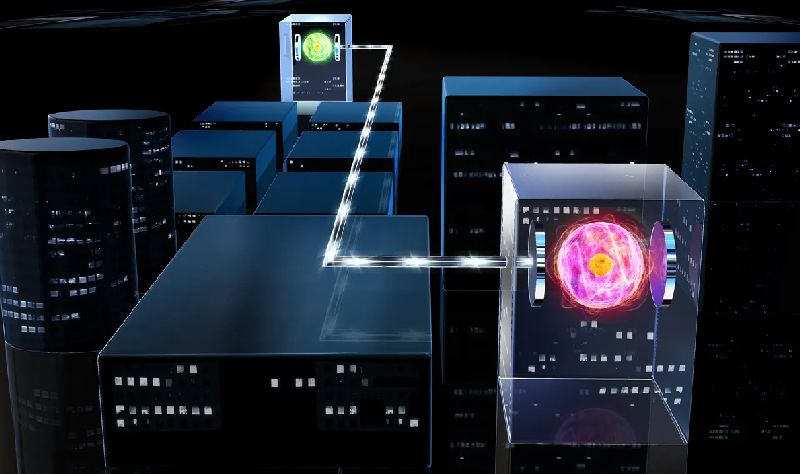
The researchers at the University of Innsbruck and the Université Paris-Saclay have developed a method for linking multiple quantum systems by trapping atoms in optical cavities. And then transferring the quantum information to light particles which can then be sent through optical fibers.
They have successfully entangled two trapped ions located more than a few meters apart for the first time.
Platform for building quantum networks
The physicists in Innsbruck, Austria, have successfully entangled two ions located in two different laboratory buildings, which were 500 meters apart.
They achieved this by sending individual photons entangled with the ions over a fiber optic cable and superimposing them, swapping the entanglement to the remote ions.
The successful entanglement demonstrates the potential of trapped ions as a platform for future distributed networks of quantum computers, quantum sensors, and atomic clocks.
The teams led by Ben Lanyon and Tracy Northup are part of the Quantum Internet Alliance, an international project under the European Union’s Quantum Flagship.
Can ions be entangled?
Yes, ions can be entangled. Ions are quantum systems that can be used for various quantum communication and quantum computing.
Entangling two or more ions means that the quantum states of these ions are correlated in a way that cannot be described by classical physics.
This correlation, or entanglement, allows for the creation of entangled states that can be used for various quantum applications, such as:
Quantum teleportation – it is a quantum communication protocol that enables the transfer of quantum states from one location to another without physically transmitting the underlying particles.
Quantum key distribution (QKD) – is a quantum communication protocol that enables two parties to generate a shared secret key that can be used for secure communication. Unlike classical encryption methods, which can be broken by an eavesdropper with sufficient computational power, QKD offers unconditional security based on the principles of quantum mechanics.
Quantum error correction – is a technique used to protect quantum information from errors that may occur during quantum computation or communication.
It is a crucial component of large-scale quantum computing, as it enables the protection of quantum information over longer time scales and improves the accuracy of quantum algorithms. It is also important for quantum communication, where it can be used to ensure the security and reliability of communication over long distances.
Takeaway
This demonstrates the potential for creating a quantum internet, which could be used for various applications such as secure communication, quantum computing, and quantum sensing.
This is an important step towards the realization of large-scale quantum networks that could span cities and eventually continents.
Such networks would enable the creation of a new generation of quantum technologies, with applications in areas such as secure communication, ultra-precise measurements, and advanced simulations of complex systems.



